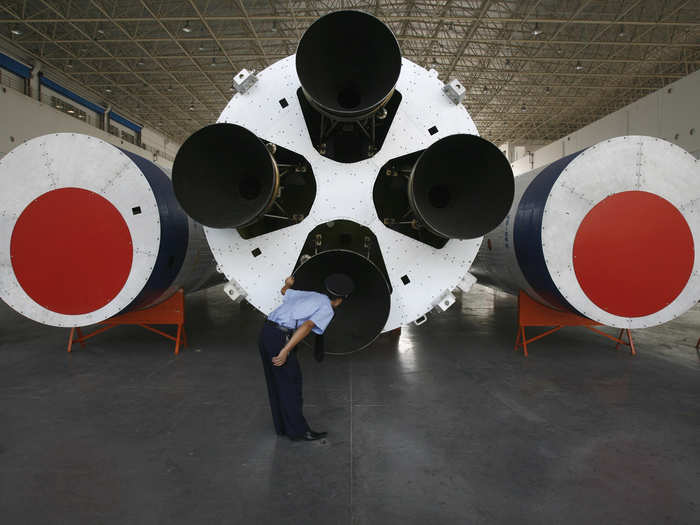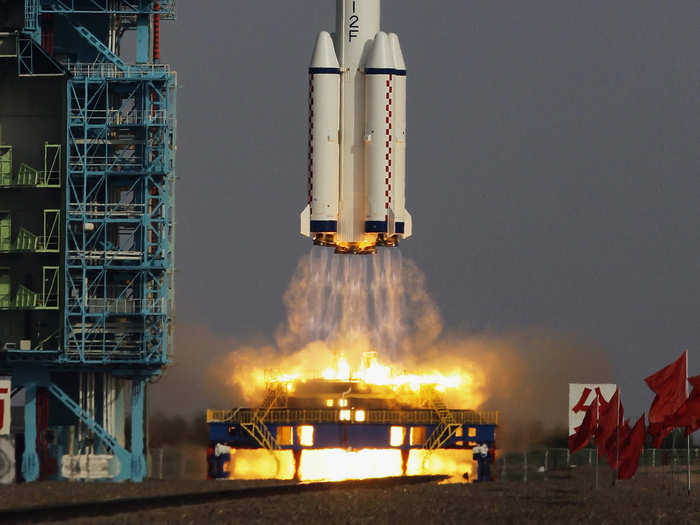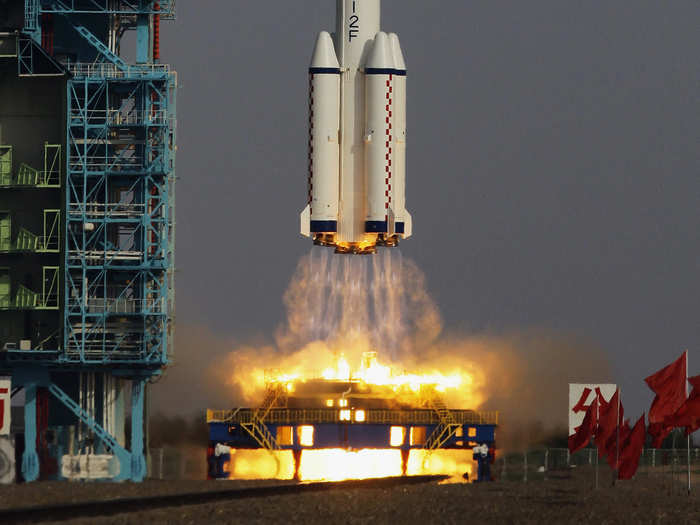China's booming space program may soon put the US and Russia to shame
The Chinese National Space Administration (CNSA) may have started exploring space later than agencies like NASA or ESA, but it's quickly catching up.

That's largely thanks to its fleet of "Long March" rockets. The latest models look similar to SpaceX's giant Falcon 9 rockets.

The rockets have powerful engines and thrusters, and can carry up to 13 tons into orbit around the Earth.

This means a Long March is capable of carrying satellites, robotic rovers, and even humans into space.

China is continuing to build more and more advanced models of Long March rockets.

For example, it launched the powerful 3C in 2014. The rocket carried an experimental spacecraft that China wants to use for a future lunar mission.

China also builds its own spacecraft, called the Shenzhou. The first mission — Shenzhou-1 — was a test flight without any crew on board.

Today the Shenzhou ferries taikonauts (Chinese astronauts) into space.

Shenzhou spacecraft are loosely based on Russia's Soyuz vehicles. They both have three separate modules, but the Chinese version is larger and made with different materials.

Unlike NASA, whose astronauts have to hitch rides into space from Russia, China has the rocket power to launch its own space travelers.

The spacecraft can snugly fit three people.

And as soon as China successfully built the Shenzhou, it didn't waste any time using it to send taikonauts into space.

On June 16, 2012, taikonauts Jing Haipeng (right), Liu Wang (center) and Liu Yang (left) were sent off in style from the Jiuquan Satellite Launch Center in Gansu province.

They all piled inside a spacecraft atop a Long March 2-F rocket and blasted off from the launch center, beginning the Shenzhou-9 mission — China's second-most-recent crewed spaceflight.

Liu Yang (right) became China's first female taikonaut that day.

The Shenzhou spacecraft are all designed to float about 213 miles above Earth — just a few miles below the International Space Station. Taikonauts usually only spend a few weeks at a time in orbit.

Here, a taikonaut has suited up and ventured into the vacuum of outer space to perform maintenance during the Shenzhou-7 mission.

He even carried a People's Republic of China flag for part of the dangerous task.

All the spacecraft come with a landing pod that looks similar to NASA's Orion spacecraft.

But China isn't just launching taikonauts into space: It has its sights set on the moon. The space agency's Chang'e-3 probe landed there in December, 2013.

The mission marked the first soft landing of a probe on the moon in almost 40 years.

The probe carried CNSA's 300-pound "Jade Rabbit" rover. The rover is now out of commission, but China still has a working telescope on the moon.

China also has its own space station. It's called Tiangong 1, and it launched in 2011. Here's a model of what it looks like:

The tiny space station (left) is designed to dock with one of the agency's Shenzhou spacecraft (right).

China has several future moon missions planned, and it recently announced that it's recruiting partner countries to help it build a bigger, better space station.

It's clear China is becoming a big player in space exploration, but right now it's illegal for scientists at NASA to collaborate with China.

Popular Right Now
Popular Keywords
Advertisement